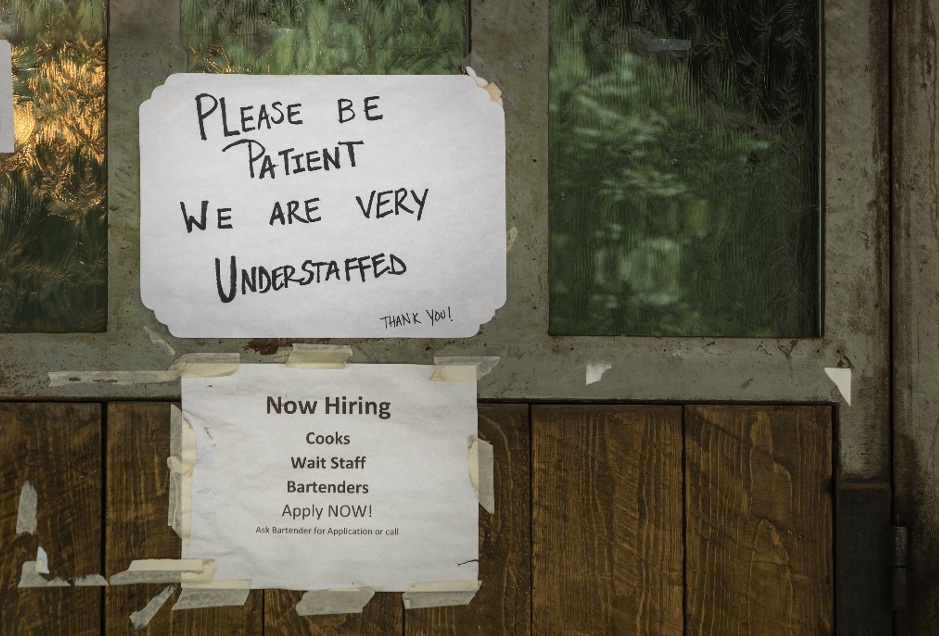Customers
New year, now hiring. Anyone?
“There is an unprecedented workforce shortage and if we continued to recruit only care givers with relevant industry qualifications, we couldn’t keep up with demand.” Giovanni Siano, Owner and Director Home Instead Australia.

Staffing is now one of the largest headaches for Australia’s small to medium business owners.
A record high job vacancy rate combined with fewer available workers have created staff shortages across numerous industries. The challenge is compounded by the recent surge in COVID-19 cases with many employees unable to work and businesses forced to close temporarily.
With a November 2021 Australian Government report showing 30 per cent of employers were expecting to increase staff (over the next 3-months) and border restrictions expected to continue, workforce availability is likely to remain an issue throughout 2022.
According to a recent ANZ Research report, this should put upward pressure on wage growth after an extended period of weakness.
“Getting more unemployed and potential workers into jobs and the return of international skilled migration are both needed to realise potential economic growth and lower unemployment,” says ANZ senior economist Catherine Birch.
“Offering the right wages and conditions to attract and retain workers, training and upskilling, and better matching of workers to jobs can all help achieve this.”

With so much competition for labour and workers feeling secure in their jobs, we should see more people moving to better jobs and asking for larger pay rises in 2022, contributing to stronger wages growth. Source: ABS, Macrobond, ANZ Research
Historically, many Australian businesses and industries have depended on skilled migration to fill critical roles, particularly in key supply chains such as agriculture which employs more than 35,000 overseas workers.
Horticulture in particular has been impacted by border closures, with ABARES survey data indicating the number of workers used by Australian horticulture farms declined around 8 per cent (11,100 workers) from 2019–20 to 2020–21.
A focus on training
ANZ customers have employed various tactics to attract and retain talent.
For example, horticulture businesses in Victoria’s northwest have built on-farm accommodation to house workers and retain a core workforce to supplement local contractors.
They’ve also utilised multiple labour contractors to mitigate risk and create a larger pool of workers from which to recruit.
Giovanni Siano, owner and director of Geelong-based business Home Instead Australia understands the value of training. It’s a key element of his company’s recruitment strategy.
Established in 2018, Home Instead Australia offers a range of in-home care solutions to the elderly and people living with a disability and has grown from 10 to 260 staff during the past three-years.
Last year it launched its Care Again program which offers people who may have been out of the workforce for some time on the job training and an accreditation in Certificate Three for in-home support. Employees are allocated a care-giver coach to promote skills building and confidence.
“There in an unprecedented workforce shortage and if we continued to recruit only care givers with relevant industry qualifications, we couldn’t keep up with demand,” says Siano.
“Our solution is to hire based on cultural fit - people who are aligned with our core values and have the right attitude. Combined with a willingness to learn we are confident we have the right in-house training and support systems to create a high-performing team of care-givers.”
This strategy has enabled the company to recruit 130-care givers in the past 12 months alone, with two recruitment and training rounds, with around 5-8 care givers, occurring weekly.
Siano admits there is no silver bullet. He estimates about 70 per cent of approaches from potential employees are due to word of mouth and 30 per cent due to a combination of public relations, social media and the use of a local recruitment agency.
“Our ability to continue to attract and retain talent comes down to the culture and working environment we have created for employees, with opportunities to learn and grow on the job. It’s important for all businesses to consider what they’re offering employees and how it’s different from the competition.”
Employer assistance
The Australian Government has also recognised the severity of the workforce shortage and implemented several initiatives designed to assist employers fill vacancies.
The Federal Government has announced programs aimed at addressing the staffing challenge.
“The Australian Government is focussed on meeting the needs of employers who need new people and new skills to support business growth,” says Luke Howarth MP, Assistant Minister for Youth and Employment Services.
“If you are an employer, there are a range of government services and programs you can use to help you find job ready candidates that match your business needs.’
For example, Jobactive is an employment service including job seekers of all ages which provides business owners with the ability to post jobs as well as access a range of resources including tailoring staff training, financial help to hire new staff and access to free professional recruitment services.
There is also the Launch into Work program that includes work experience, training and mentoring to create long-term employment pathways for women.
If you are looking to meet job seekers quickly, The Australian Government Jobs Fairs help local employers meet and connect with job seekers at customised events hosted across the country.
Further information on these services is available at: www.dese.gov.au
Although individual businesses face unique challenges, the labour market is expected to continue to be constrained for some time.
This makes the need to talk with like-minded business owners about recruitment strategies and seek support, more critical as we continue to ride the pandemic wave.
RELATED ARTICLES
Customers
Businesses: 5 tips for post lockdown recovery
Customers
